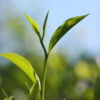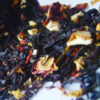Tea is usually classified as Black e.g. English Breakfast, Green e.g. Sencha, Oolong e.g. Ti Kwan Yin (Goddess of Mercy) and White e.g. Silver Needles.
However Chinese teas have two additional classes which are Yellow tea e.g. Huo Shan Huang Ya from the Anhui Province and Red tea e.g. some Keemun teas.
While all these teas come from the same plant source, they differ greatly because of the method of processing.
Black teas are fermented and go through a drying, withering and rolling process while green and white teas are produced by natural drying or pan firing and sometimes steaming.
Oolong teas are semi fermented.
All teas except black teas should be drunk with without milk.
Even black teas, particularly the better quality teas should be drunk without milk, as the true flavour, aroma and the unique subtlety of a tea can be best enjoyed without milk.
However old habits die hard and milk is often added, either before or after tea is poured.
Milk was first introduced into tea to mask the mustiness of teas after their long sailing voyage from China. It is a particular English habit which has spread to all parts of the Old Empire.
Try drinking your tea without milk. Brew it with less strength if you must and enjoy it’s real flavour.
Related posts
10 years ago Hilary White (founder of Elmstock Tea) wrote a series of blog posts called the Stories of Tea: A Journey through the Mysteries... Continue reading
Good quality tea and good water are the essentials for a great cuppa. However to brew the best cup of tea the quantities used, as... Continue reading
Single Estate Teas are teas produced from a single plantation or even from a particular garden (sometimes referred to as a division) within a particular... Continue reading
While there are many who doubt that climate change is taking place, the reality is that changing weather patterns, particularly around the Indian Ocean rim... Continue reading
Altitude, soil, rainfall and climate collectively referred to as ‘terroir’ in wine growing and tea production also determine the flavour, appearance and quality of the... Continue reading










